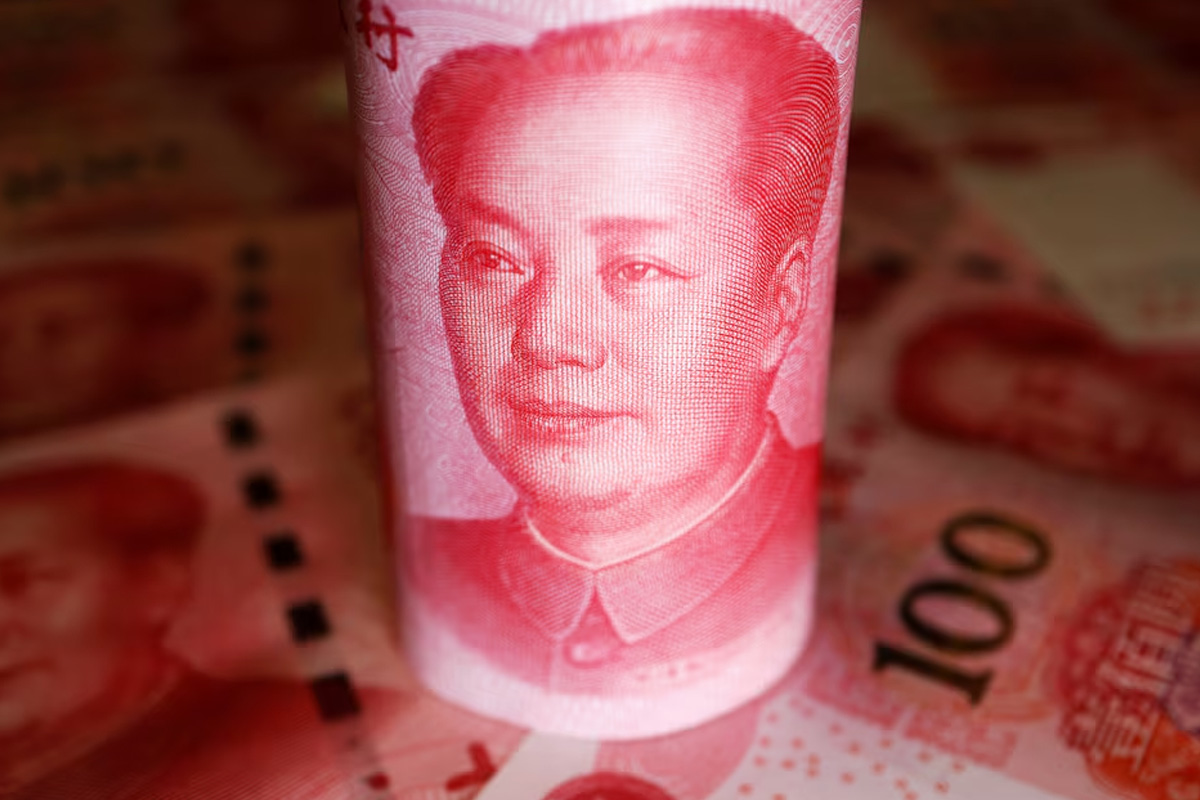China’s yuan declined to a four-month low against the dollar on Friday on expectations of monetary easing, breaching a key threshold and prompting state-owned banks to step in to defend the currency.
In the spot market, the onshore yuan fell to the weak side of the psychologically important 7.2 per dollar level in early trades to hit a low of 7.24, its softest since Nov. 17, 2023. However, those weak levels were no longer visible on the charts towards the close of onshore trading, with the low for the day at 7.2303 according to LSEG Eikon data.
Market sources told Reuters that state banks stepped in to buy the yuan for dollars. The yuan was at 7.2275 at the domestic close (0830 GMT), 281 pips softer than the previous late session close.
The sources declined to be identified because they are not authorised to speak publicly about market trades.
The yuan has fallen roughly 2% in three months, and has been pressured by growing market expectations of further monetary easing to prop up the world’s second-largest economy as well as a weaker Japanese yen .
Carlos Casanova, senior economist for Asia at UBP, said the strengthening dollar and sharp depreciation in the yen and some Asian currencies after the Bank of Japan ended its negative interest rate policy, have weighed on the yuan.
“The market seems to have interpreted Asian currencies should depreciate further against the U.S. dollar until the D-day of interest rate cuts by the Fed,” he said.
Prior to the market opening, the People’s Bank of China (PBOC) set the midpoint rate , around which the yuan is allowed to trade in a 2% band, at 7.1004 per dollar, 62 pips weaker than the previous fix of 7.0942.
The Chinese central bank has for months been setting the rate at levels firmer than market projections, traders said.
Friday’s midpoint was 1,143 pips firmer than a Reuters estimate of 7.2147, the biggest discrepancy since November.
The offshore yuan weakened to 7.2723 in late Asian trade, the weakest since Nov. 14, 2023.
Traders attributed the sudden weakness in the yuan to rising monetary easing expectations after senior PBOC officials hinted at there being further room to reduce bank reserve requirements.







